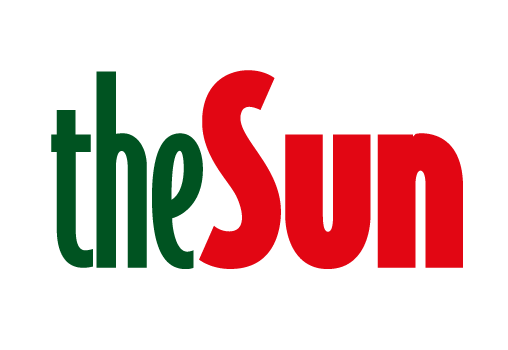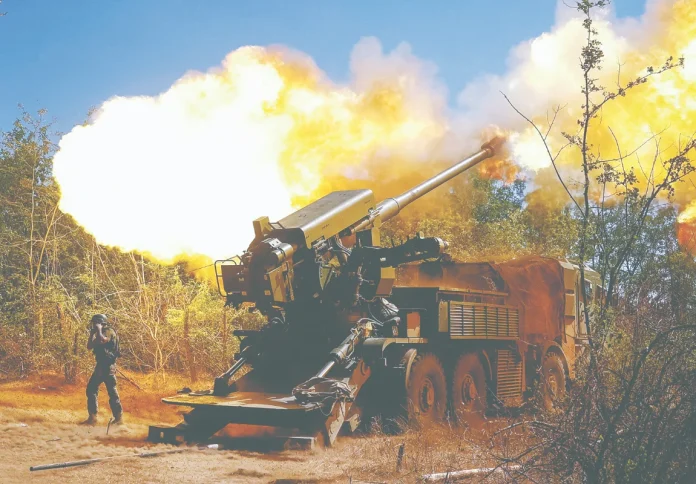Ukraine’s arms imports surge 100-fold amid corruption concerns, with US positioned to dominate post-war reconstruction and European defence contracts
UKRAINE became the world’s largest importer of major arms in the period 2020 to 2024, with its imports increasing nearly 100 times over compared with 2015 to 2019, according to Stockholm International Peace Research Institute.
Media headlines highlighted Ukrainian President Volodymyr Zelensky after he signed a military procurement letter of intent with his French counterpart, Emmanuel Macron.
Zelensky described the agreement as providing Ukraine with “one of the greatest air defence systems in the world”, aimed at strengthening the country’s defence against Russian air attacks and ensuring long-term security.
According to the agreement, Ukraine will receive up to 100 of France’s Rafale F4 fighter jets as well as advanced air defence systems. The estimated sales value of a new Dassault Rafale fighter jet typically ranges from €225 million (RM1,08 billion) to €285 million (RM1.36 billion) per aircraft, depending on the specific contract, which includes weapons packages, training and support. This would make the deal worth an eye-watering €22 to €28 billion alone.
Other military hardware to be procured but not included in the cost are air defence systems, advanced air-to-air missiles and guided bombs, radar systems and drones, with production of interceptor drones planned to begin in late 2025.
The French success in this procurement exercise brings closer attention to an important but often underreported and less detailed aspect of the war. While much reporting on Ukraine focuses on the war and the aid packages supporting the country, the commercial competition and industrial beneficiaries among its supporters, particularly within the European Union (EU) and other arms-exporting nations such as the United Kingdom, are also significant factors, especially in relation to military aid and procurement contracts. This competition for the economic and financial benefits of war and reconstruction will intensify even as the war, in its current form, is ending.
According to available data, the EU collectively has provided over US$60 billion (RM249 billion) in military aid and contracts to Ukraine. Germany is often cited as the largest individual contributor among EU countries. However, when focusing specifically on arms sales and procurement contracts, which reveal which nations’ defence industries are “winning” in terms of new business, the picture becomes more complex and dynamic.
An added feature is the perception that Ukrainian military procurement is riddled with kickbacks and corruption is widespread, both internally among Ukrainians and externally among international partners and observers.
As recently as March 2025, surveys indicated that over 91% of the Ukrainian population believed corruption was “somewhat” or “very widespread”. This has not discouraged arms suppliers to Ukraine; instead, it appears to have encouraged them.
Key European armament players
Germany has consistently been one of the largest single European donors of military aid to Ukraine, often ranking second globally after the United States in terms of total allocated aid. This includes high-value equipment like the Leopard 2 tanks and IRIS-T air defence systems.
German companies, such as the arms manufacturer Rheinmetall, have secured major contractsfor producing and supplying ammunition, vehicles and other equipment, making the country a significant industrial winner.
France has become the world’s second-largest arms exporter overall (in a recent period from 2020 to 2024) and its exports to other European states have surged.
While the letter of intent does not represent immediate sales, it proposes potential contracts for the French defence industry (Dassault Aviation and others) and will be a major shift in Ukraine’s future military air procurement.
Sweden has signed a similar letter of intent for a long-term deal to supply up to 150 Gripen E-series fighter jets to Ukraine, with the first deliveries expected within the next few years. Sweden has also provided significant military aid in other forms, including armoured vehicles, artillery, air defence systems and financial contributions to various funds.
Poland is also consistently cited as a major supplier of military aid, often ranking third among all suppliers to Ukraine (after the US and Germany) in terms of the transfer of major conventional arms.
Biggest winner in Ukraine’s reconstruction and rearmament
Unreported behind the scenes – as Europe’s leaders go public in continuing to urge Zelensky to reject a settlement of the war except on terms that are deemed as a clear defeat for Russia – has been the fierce competition among their military and industrial interests to win the lucrative contracts enriching the lobby groups and buttressing national economies.
This competition is intensifying as Zelensky makes a last-ditch effort to rally European military support to avoid a more comprehensive defeat as Russia’s war machine grinds forward and closes in on Ukrainian positions in the Donbas region.
The biggest winner is unlikely to emerge from among individual EU countries heavily invested in the armament and industrial complexes or even from the EU as a collective. It will be the US, which – having provided the largest amount of military assistance to Ukraine, an estimated US$66.5 billion in military aid since February 2022 – is determined not only to call the shots in the peace settlement but also to recover its war “investment” in the reconstruction and rearmament years ahead.
This can be seen clearly from the 28-point draft peace settlement plan presented to Ukraine, which is essentially an American imposition on Ukraine and its supporters in the EU.
The entire structure of the plan – particularly control over Russian frozen assets, the financial profits for the US in reconstruction, the US-led security dialogue and the key position and authority of the Peace Council to be chaired by President Donald Trump to monitor implementation – appear designed to establish US primacy in shaping the post-war European order and accessing strategic and economic opportunities, potentially at the expense of the EU’s own efforts, leverage and desired role in continental security.
European military and industry critics of the plan will be hoping that the final peace settlement will see more than a few contracts thrown their way as American military and economic hegemony over Europe continues uncontested.
Meanwhile, Zelensky is facing his biggest challenge away from the battlefield – either accept the American-Russian peace plan or face even greater exposure as leader of a corrupt regime that has reaped extraordinary benefits from the war. Trump has given him a deadline on acceptance of the plan, which Zelensky will find difficult to wriggle out of.
Lim Teck Ghee’s Another Take is aimed at demystifying social orthodoxy. Comments: letters@thesundaily.com







